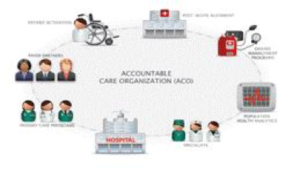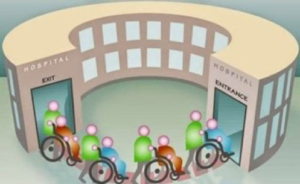Are you becoming lost in the vast array of new healthcare terms, acronyms and abbreviations that have been introduced and bantered around? Don’t be alarmed! This is one of the challenges that sales professionals face in today’s market. For specialty sales representatives many of these new terms, and acronyms relate to the specific product or service they sell.
For other sales professionals these terms are like a foreign language and they are unaware how it affects their business. In order to gain credibility, skilled sales professionals need to arm themselves with up to date healthcare industry knowledge. Embracing the changes in language allows you to engage with multiple stakeholders throughout the healthcare community. In addition, you will increase your ability to become a respected partner with your customer. Mastering today’s health care terminology knowledge is mandatory to success.
Here are some definitions and explanations that should help reduce your anxiety and increase your knowledge base. In italics are the reasons why each term, acronym and abbreviation is important.
-
Accountable Care Organization (ACO)
 An ACO is a group of healthcare providers (e.g., hospitals, physicians, and others involved in patient care) that work together to coordinate care for the patients they serve. Under the ACO model they accept collective accountability for the quality and cost of care delivered to a specific population of patients that are currently enrolled in a traditional fee-for-service program.
An ACO is a group of healthcare providers (e.g., hospitals, physicians, and others involved in patient care) that work together to coordinate care for the patients they serve. Under the ACO model they accept collective accountability for the quality and cost of care delivered to a specific population of patients that are currently enrolled in a traditional fee-for-service program.
Within an ACO the patient is a partner in the care they receive. Originally ACOs were designed with the goal to provide seamless, high quality care to Medicare beneficiaries (that is, those who are not in a Medicare Advantage private plan).
While ACOs began with Medicare patients, under the Affordable Care Act, all major payers are now offering a flavor of an ACO. Today an ACO may be sponsored by physicians, hospitals or payers that coordinate, manage and provide care for patients.
ACOs are being formed because the Affordable Care Act (ACA) includes a provision that allows Medicare to reward healthcare organizations with a share of the savings that results from improving the quality of patient care while reducing the cost for their Medicare eligible populations.
-
Value Based Purchasing (VBP)
 Value Based Purchasing is a business practice that improves the value of health care services, where value is a function of both quality and cost. The standard formula is:
Value Based Purchasing is a business practice that improves the value of health care services, where value is a function of both quality and cost. The standard formula is:
Value = Quality ÷ Cost
The fundamental tenet of VBP states that healthcare buyers should hold healthcare providers accountable for a) the quality of care provided b) improved patient outcomes and c) complete health status and its cost. The focus of VBP is to reduce waste and inappropriate care and to reward the best performers.
VBP rewards hospitals for improving the quality of care by redistributing Medicare payments to hospitals with high performance in terms of quality scores (through core measures) and experience at the expense of lower performing hospitals.
-
Patient Centered Medical Home (PCMH)

The patient centered medical home is not a physical place but rather a method that delivers the core functions of primary health care.
The patient centered medical home has the following components:
- Patient-Focused: It provides primary health care that takes into account the individual needs of each person while respecting their values, culture and preferences. It helps each patient manage their own care in conjunction with their family members.
- Comprehensive in Scope: The patient centered medical home helps each patient manage:
- Their physical and mental health
- Wellness and prevention
- Acute and chronic care needs
It uses a team approach that often includes physicians, nurses, physician assistants, pharmacists, nutritionists, social workers and care managers and others as needed.
- Coordinated: The patient centered medical home coordinates the patient care across the entire continuum of care as it is required. This provides for a seamless transition and good communication between the patient, family and care-givers.
- Accessible: The patient centered medical home provides a variety of services designed for prompt access to a member of the health care team such as through E-mail and telephone, extended hours of operation and prompt scheduling when needs arise.
- Focused on quality and safety: The patient centered medical home uses evidence-based medicine and clinical decision-support tools, performance measurement and improvement and measurement of patient experiences as a standard practice with each patient.
The patient centered medical home is important because it has the capability of improving how primary care is organized and delivered in the U.S.
-
Re-admissions
 It is estimated that around 20% of re-admissions are for patients returning within (30) days of their previous hospital stay for the same diagnosis. There is ample evidence the rate of avoidable re-hospitalizations can be prevented by improving discharge planning and the transition of care to different providers and by providing proper patient coaching, education and support for patient self-management.
It is estimated that around 20% of re-admissions are for patients returning within (30) days of their previous hospital stay for the same diagnosis. There is ample evidence the rate of avoidable re-hospitalizations can be prevented by improving discharge planning and the transition of care to different providers and by providing proper patient coaching, education and support for patient self-management.
Under Medicare’s Inpatient Prospective Payment System (IPPS) which is part of the Affordable Care Act (ACA) there are specific reductions to payments and penalties being made for excessive readmissions that are directly related to the original diagnosis in acute care hospitals that began during the fiscal years beginning on or after October 1, 2012. Also, Medicare will no longer pay for the treatment of certain hospital-acquired infections that are considered preventable.
The purpose of the penalties is to improve the quality of care and reduce the unnecessary costs associated with patient re-admissions.
-
Telemedicine
 The use of medical information exchanged from one site to another using electronic communications for the health and education of patients or providers and to improve patient care. It is used to conduct medical consultations, treatments or other clinical services from a distance. Telemedicine uses the internet, wireless, satellite and the telephone.
The use of medical information exchanged from one site to another using electronic communications for the health and education of patients or providers and to improve patient care. It is used to conduct medical consultations, treatments or other clinical services from a distance. Telemedicine uses the internet, wireless, satellite and the telephone.
It is a quickly growing sector and has provided access to many rural residents with limited physical access to medical services.
Parting Thoughts
Understanding the language of healthcare improves your business acumen, provides immediate credibility and allows you to have better conversations with existing and potential customers.
These terms and others are included in our New Book Entitled “Selling to Hospitals & Healthcare Organizations: A Glossary of Business Acumen & Personnel” Available on Amazon and Kindle.
As always we welcome your thoughts and input. Let’s start a discussion and elevate the sales profession with a thoughtful, civil and informative discourse.


